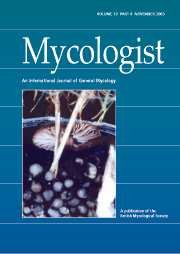Article contents
Tracing megafaunal extinctions with dung fungal spores
Published online by Cambridge University Press: 24 December 2004
Extract
During the latest part of the Quaternary period (approximately from 11,000 to 50,000 years ago), a variety of large animals went extinct across extensive areas of the planet (Martin & Klein, 1984; MacPhee, 1999). Although a widespread phenomenon, late Quaternary extinctions of the so-called ‘megafauna’ varied greatly in intensity and timing around the world. So, while Europe, Asia, and Africa experienced only limited losses toward the end of the Pleistocene, the Americas, Australia, Madagascar and many Oceanic islands suffered dramatic extinctions. In North America, more than two-thirds of the mammals weighing more than 44 kg disappeared about 11,000 years ago (Alroy, 2001). Nearly at the same time, in South America most of the species of medium to large mammals also vanished. Australia witnessed an even more catastrophic continent-wide die-off. Some 23 of the 24 genera of Australian land vertebrates with a body mass of 45 to 1000 kilograms had died out by around 46,000 years ago (Roberts et al., 2001). The casualties of this ‘marvellous fact’, as the English naturalist Alfred Russell Wallace called it over a century ago (Wallace, 1876), bear exotic names that evoke fantastic images. Among them were fearsome claw-footed kangaroos that weighed 300 kilograms and the giant marsupial equivalents of rhinoceros and leopard in Australia. Somewhat later in North America, sabre-toothed cats, giant bisons, mammoths, mastodons, and also less well known mammals like the short-faced bear and the giant beaver went extinct. The whopping half-ton elephant birds, the heaviest birds ever known, giant lemurs and other strange beasts disappeared from the island of Madagascar within the last millennium (Burney, 1999).
- Type
- Original Article
- Information
- Copyright
- © 2004 The British Mycological Society
- 10
- Cited by


